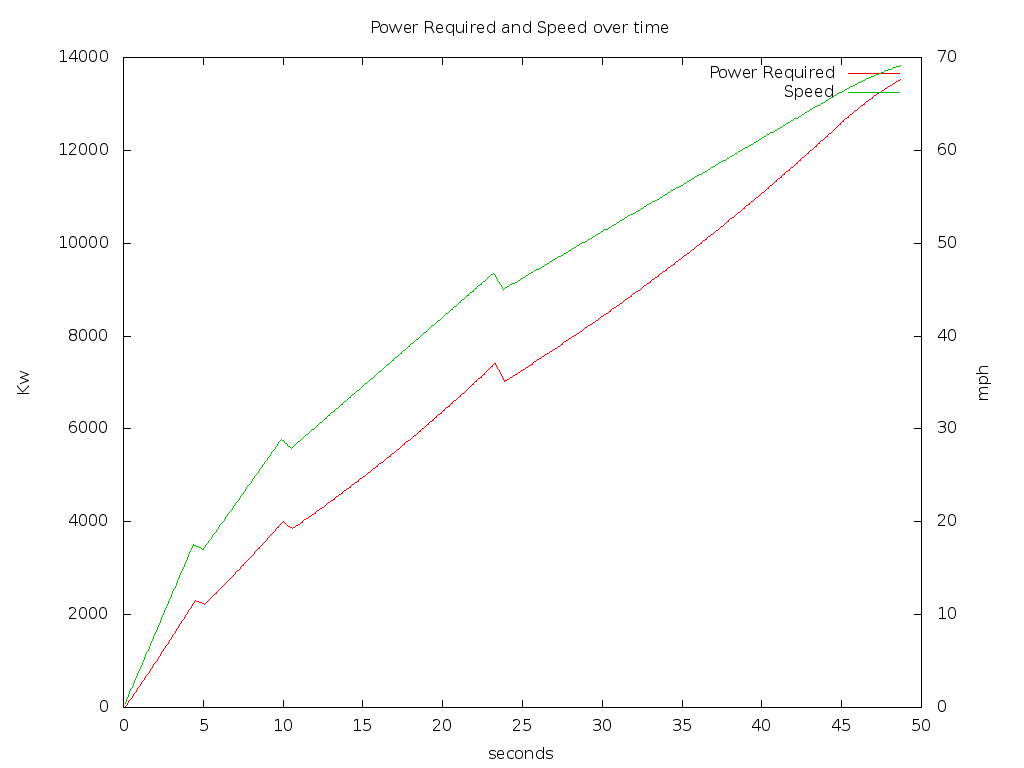
This article covers a range of scenarios, best and worst case driving conditions, for a Hybrid Electric Vehicle that weighs only 350kg, has good aerodynamics, a small on-board battery pack and a small on-board off-the-shelf Diesel Generator. The reasons for these design choices are:
The actual characteristics chosen are:
These numbers can be plugged into the online simulator to provide good estimates of the expected performance.
The simulator shows that the good aerodynamics, low weight and 13in Tyres take the vehicle to a top speed of 69mph in 45 seconds, with 60mph being reached in 38, if the motor is deliberately restricted to its Rated Torque figure of 26Nm.
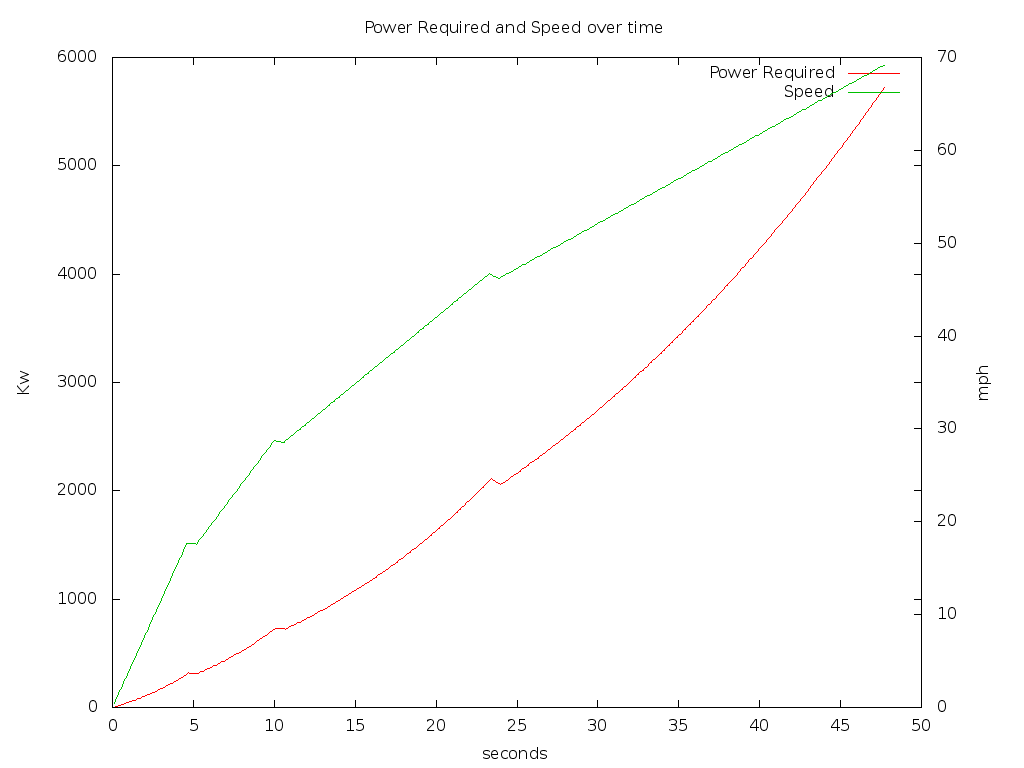
If however the Electric Motor is allowed to run into its Peak Torque band, then the top speed is reached in 25 seconds, and 60mph achieved in 20.

However, as that is outside of the Rated Torque figure, the motor will need to cool down if pushed like this. The alternative is to find a much more expensive motor: the 12kW unit is, at only $900 instead of $1300 or above, therefore considered to be a reasonable compromise between cost and performance.
Power required to sustain 60mph can be seen to be 5kW, and almost 6kW required to sustain 69mph. This means that at 60mph, on the flat, the vehicle can be sustained indefinitely at that speed based on the power output of the 6kW Diesel Generator (rated output, 5kW), and the batteries will neither be charged nor discharged, retaining whatever capacity they had at the time that the Cruise speed of 60mph was attained.
If, however, the vehicle cruises at its maximum speed of 69mph, an additional 0.9 to 1kW of power will be required and drained from the battery. A 2.5kWh battery would therefore be drained completely within 150 minutes (2.5 hours) at this rate, at which point the vehicle's top cruising speed would fall to the maximum supply capacity of the on-board Generator: 60mph.
This is why exceeding the 60mph figure is considered "emergency": it drains the battery, limiting the vehicle's ability to use the battery for other emergency or acceleration purposes.
Changing the gradient to 25% (14 degrees), the simulator shows that the
top speed of 69mph is achieved in 49 seconds, and 60mph in 38.

If however the Electric Motor is allowed to run into its Peak Torque band, then the top speed is reached in 31 seconds, and 60mph achieved in 22.
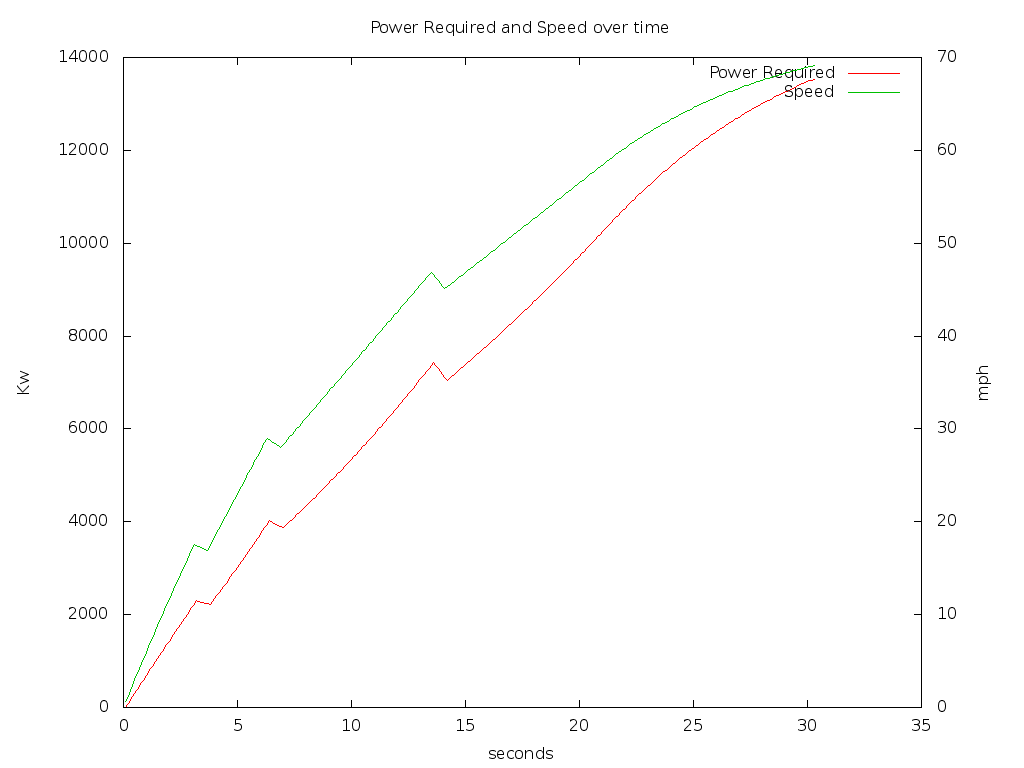
It should be noted, however, that above 60mph on a 25% gradient, the motor is at or just beyond its 12kW rated power. Thus, any speed above that will begin to overheat the motor within 30 seconds. Operating at 60mph or below is therefore best.
Also, that 12kW is a full 7kW over the rated 5kW power output of the on-board Generator. Back-calculating from the 2.5kWh capacity of the battery, that would drain the battery completely within 21 minutes. Operating under such conditions can therefore continue for a distance of 21 miles at 60mph.
Assuming that the battery has been completely drained, the available power is only the on-board 5kW generator. The maximum speed that can therefore be attained, under these worst-case conditions, is 34.5mph. 30mph takes 38 seconds, and the last 4mph takes over 1 minute to attain.
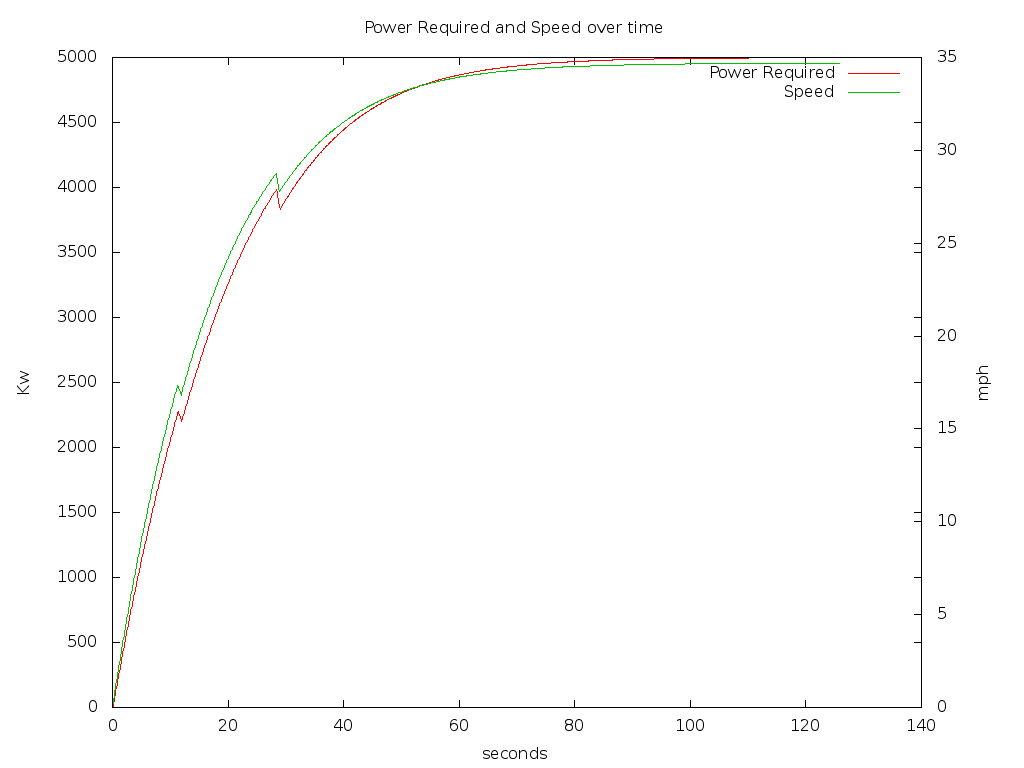
Several things about this worst-case scenario have to be pointed out:
Assuming that the battery has been completely drained, the available power is only the on-board 5kW generator. The maximum speed that can therefore be attained, under these worst-case conditions, is 65.5mph. 60mph takes 42 seconds, and the last 5mph takes over 1 minute to attain.
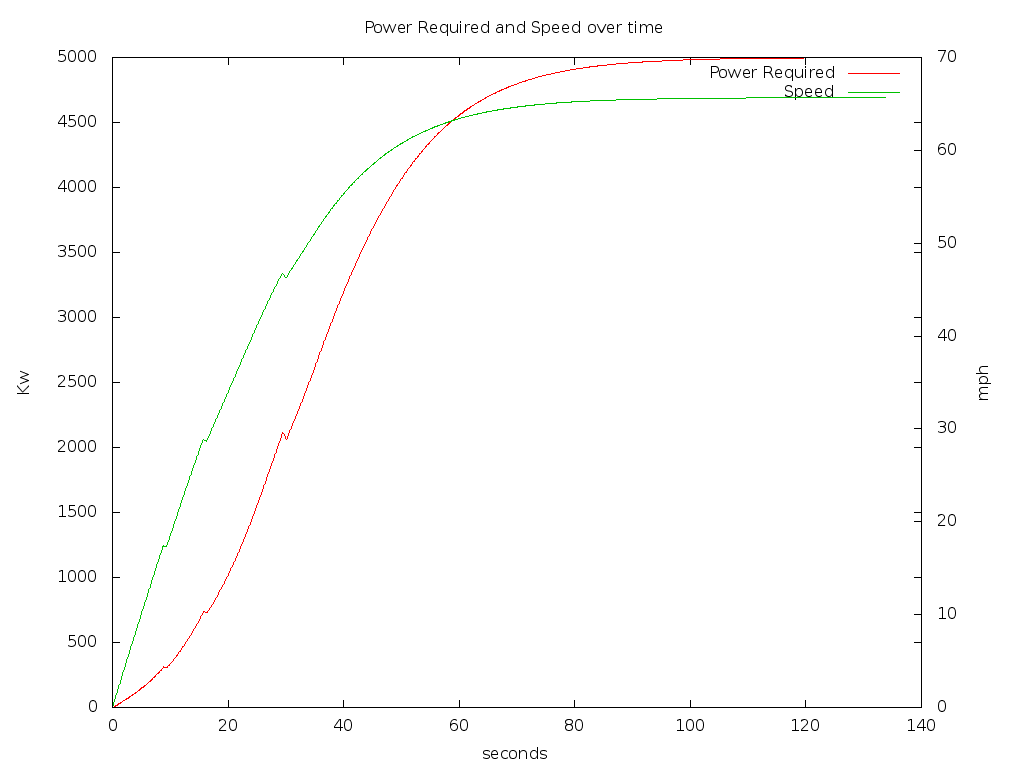
It is, therefore, possible to drive the vehicle on the flat and still just about keep up with day-to-day "modern" highway traffic, under the conditions where the battery is completely drained. However, it is not entirely adviseable. Fortunately, again: simply driving at a slower top speed, or stopping for a short duration, allows the on-board Generator to recharge the battery.
It is also worthwhile pointing out that for Urban or City Driving, even where the battery is completely drained, the performance is tolerable (just). 30mph takes 28 seconds, but it has to be pointed out that under these conditions, the on-board Generator will be putting power back into the battery. Careful driving would therefore reward the driver with more available capacity, over time.
Assuming a fully-charged battery at the start of the journey, the best-case scenario is to operate the vehicle at a cruise speed of 60mph on the flat: this speed can be maintained indefinitely until the Diesel tank runs out, and even then, the battery could be used to continue for a further 30 minutes (30 miles).
Any time the best-case scenario is exceeded, the battery will be needed. Operating continuously at 60mph for 21 minutes up a 25% Gradient for this type of vehicle can be considered to be a pretty good achievement, as can running for 150 miles (2.5 hours) on the flat, at 69mph, as can a fuel economy figure of 112mpg when operating the vehicle under completely flat battery conditions on a 25% Gradient.
The vehicle is however best operated within the conditions where the battery is allowed to maintain a reasonable charge, or the driver is happy to recharge overnight or to stop for a short duration to use the on-board Generator to recharge the battery. Such small stops on a long journey are themselves generally adviseable, so apart from the oddity of appearing to "leave the motor running" whilst taking a break, the vehicle's capabilities fit with best operating practice, anyway.
Overall, it is felt that drivers will adapt themselves to the vehicle's capabilities, especially given that to do so results in better fuel economy and overall has a smaller impact on their wallet. For those people who feel that such conditions are not for them, they may always purchase and maintain a less fuel-efficient vehicle, or take Public Transport.